
Building a Greener Future: The Environmental Benefits of Microsoft's SaaS
In recent years, the tech industry has witnessed a remarkable shift towards cloud-based solutions, particularly Software as a Service (SaaS). Microsoft has been at the forefront of this digital transformation. As a Microsoft partner, 4PS UK is committed to the goal of migrating all 4PS Construct customers to SaaS as swiftly as possible. This blog explores why Microsoft’s SaaS offerings are considered a more sustainable choice for the construction sector.

The technology landscape has significantly shifted towards cloud-based solutions, particularly Software as a Service (SaaS) offerings in recent years. Microsoft, a leading player in the tech industry, has been at the forefront of this digital transformation.
We are no exception – as a Microsoft partner, 4PS UK aims to move all our 4PS Construct customers to SaaS as soon as possible.
We believe that in an era where innovation and efficiency are reshaping industries, the construction sector is no exception. Microsoft’s Software as a Service (SaaS) offerings have emerged, providing benefits that empower growth and collaboration. Another compelling aspect of Microsoft’s SaaS approach is its sustainability benefits compared to traditional on-premise software deployments. Let’s delve into why Microsoft’s SaaS is considered a more sustainable choice:
1. Energy Efficiency
Traditional on-premise software setups demand dedicated hardware and infrastructure, producing substantial energy consumption for operation and cooling. Microsoft’s SaaS, however, uses shared, optimised data centres designed for energy efficiency. These data centres are equipped to use resources effectively, reducing energy usage and environmental impact.
2. Resource Sharing
The power of SaaS lies in its ability to enable multiple users to share the same underlying infrastructure. This consolidation minimises the hardware and resource requirements, leading to a smaller carbon footprint than individual on-premise deployments.
3. Scalability
SaaS applications are built to scale resources up or down based on demand. This elasticity optimises resource usage and prevents the common pitfall of overprovisioning hardware in on-premise setups.
4. Hardware Lifespan
On-premise hardware can become outdated quickly, needing frequent upgrades and replacements. In contrast, Microsoft’s SaaS model keeps the underlying hardware under the provider’s management, ensuring consistent updates and refreshes for enhanced efficiency and sustainability.
5. Reduced Maintenance
With SaaS, organisations no longer need to manage and support their server hardware—this reduction in physical infrastructure management results in lower electronic waste production and a decreased environmental footprint.
6. Remote Access
Construction professionals are often on the move, making accessibility critical. Microsoft SaaS solutions offer remote access to applications and data, enabling field workers, project managers, and executives to stay connected and productive from anywhere. This mobility accelerates decision-making, reduces downtime, enhances overall project efficiency, and indirectly contributes to lower carbon emissions associated with travel.
7. Optimised Software Delivery
SaaS platforms deliver seamless updates and patches, ensuring that software is always up-to-date and secure. This removes the resource-intensive process of distributing updates, thus promoting more sustainable practices.
8. Waste Reduction
On-premise deployments use physical servers with a set lifespan, which must be recycled and replaced. Microsoft’s SaaS offering optimises resource allocation by mitigating individual waste generated from on-premise deployments.
9. Server Utilisation
Microsoft’s SaaS offering optimises server utilisation by distributing workloads across its infrastructure. This contrasts with on-premise setups, which might suffer from lower utilisation if demand fluctuates.
10. Lifecycle Management
SaaS platforms incorporate end-of-life management practices more efficiently, ensuring proper disposal or recycling of hardware components. This can be challenging for organisations managing diverse on-premise infrastructure.
For further information regarding Microsoft’s sustainability efforts, please see their official report for 2022: 2022 Environmental Sustainability Report (microsoft.com)
-
Share:
